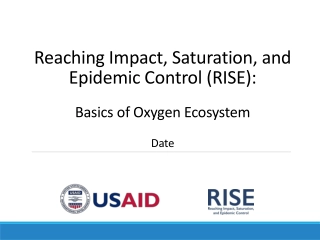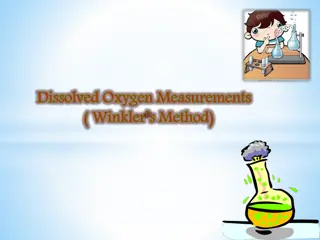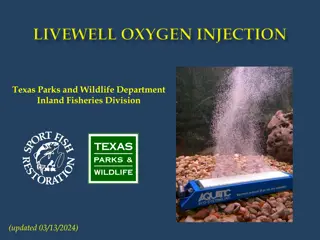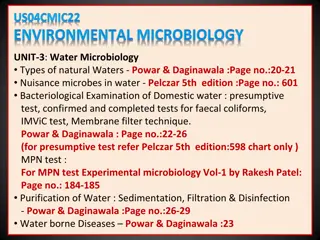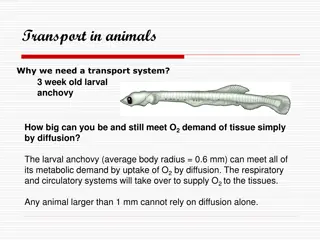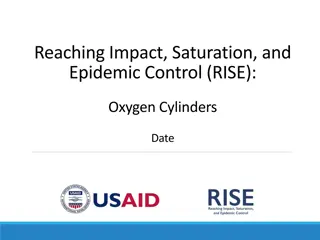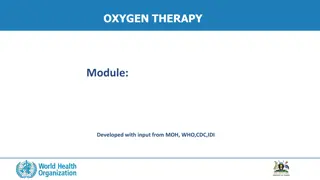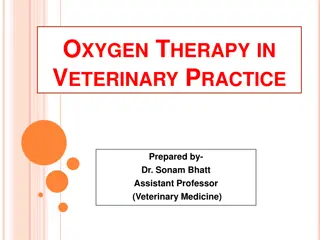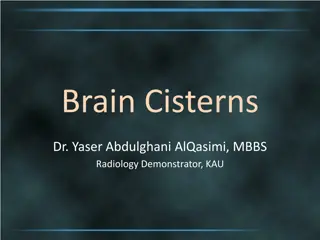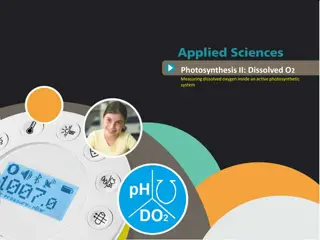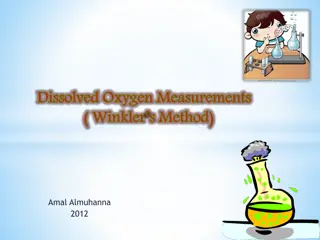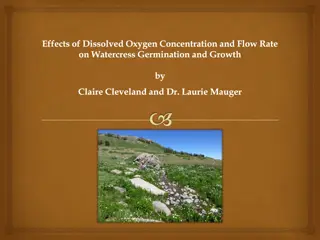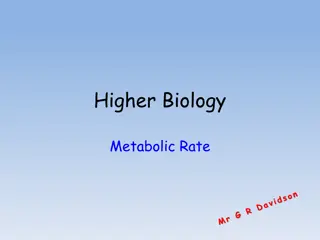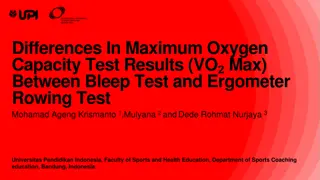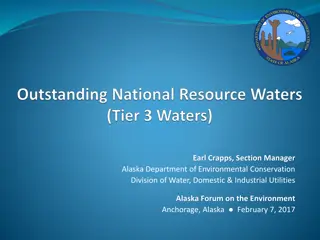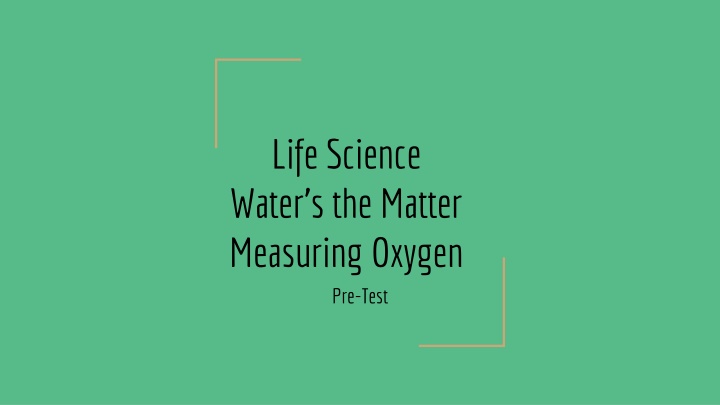
Dissolved Oxygen and its Impact on Aquatic Life
This content explores the importance of dissolved oxygen for fish and aquatic ecosystems. It covers topics such as the role of oxygen in water, the percentage of oxygen in the atmosphere, factors affecting dissolved oxygen levels in water, and the consequences of raw sewage pollution on aquatic environments.
Download Presentation

Please find below an Image/Link to download the presentation.
The content on the website is provided AS IS for your information and personal use only. It may not be sold, licensed, or shared on other websites without obtaining consent from the author. If you encounter any issues during the download, it is possible that the publisher has removed the file from their server.
You are allowed to download the files provided on this website for personal or commercial use, subject to the condition that they are used lawfully. All files are the property of their respective owners.
The content on the website is provided AS IS for your information and personal use only. It may not be sold, licensed, or shared on other websites without obtaining consent from the author.
E N D
Presentation Transcript
Life Science Water s the Matter Measuring Oxygen Pre-Test
Which of the following is true concerning dissolved oxygen and fish? A. Fish do not use oxygen so the amount of oxygen dissolved in water does not matter. B. Fish remove oxygen from the atmosphere by coming to the surface and swallowing bubbles. C. Fish remove oxygen from the water by using their gills. D. The scales of fish have a vast blood supply and they remove oxygen dissolved in the water. E. Fish can breathe with lungs when they need to.
What percentage of the atmosphere is oxygen? A. 9% B. 21% C. 50% D. 79% E. 100%
Which of the following does not increase the amount of dissolved oxygen in water? A. Diffusion from the atmosphere B. Bacteria in the water C. Plants in the water D. Rapid movement of water over rocks E. Algae in the water
Which of the following does not increase the amount of dissolved oxygen in water? A. Slowing the flow of water B. Decreasing aeration of water C. Increasing the temperature of water D. Increasing the amount of bacteria in water
One problem that occurs when raw sewage enters rivers and streams is ____________________________________________. A. The bacteria present consume large amounts of dissolved oxygen. B. The bacteria present produce toxins that can kill fish. C. The bacteria present produce toxins that can kill aquatic plants. D. The sewage acts as fertilizer and causes plants to grow too fast. E. Chemicals used to treat raw sewage will kill both fish and aquatic plants.

